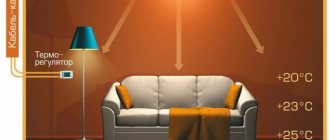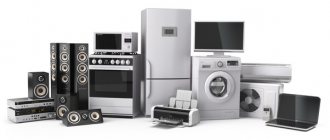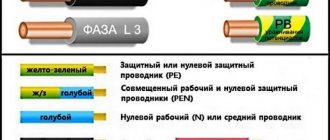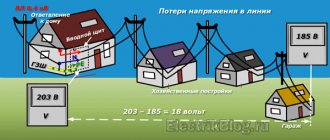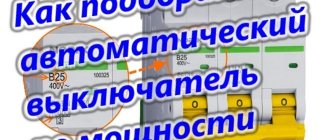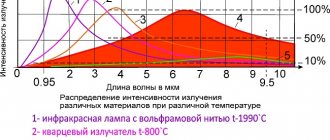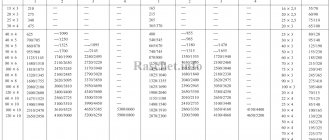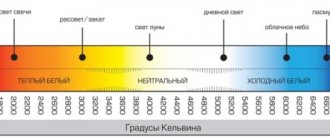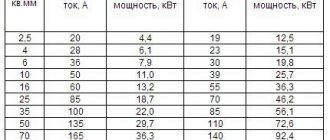Infrared heaters are heating devices that transfer the heat they produce to surrounding objects through infrared radiation.
This radiation, like sunlight, is invisible, is not absorbed by the air and reaches the lower part of the room without loss, warming up the floor, furniture, walls and interior elements located in the coverage area of the device. In infrared heaters, up to 90% of the energy is converted into a stream of long-wavelength heat rays and only 10% is spent on heating the air next to the heater. Thus, the heat from the infrared heater is distributed evenly throughout the entire radiation zone, does not depend on air flows and ceiling heights, and creates comfortable conditions for people by heating the floor, and not the air at head level. Thanks to this principle of operation, an infrared heater can be used where another heating method is difficult, impossible or economically unjustified: in rooms with very high ceilings or large heat losses (ventilated, heavily glazed, etc.); in semi-open and open verandas, terraces, halls; on open air; in rooms where zonal or even spot heating is needed. Other advantages of infrared heaters include efficiency, convenience, safety, ease of use and maintenance, compactness and noiselessness.
A wide range and range of uses means that for each specific case of installing an infrared heater, it is necessary to make a calculation and select the device model that will optimally satisfy the heat needs. A model for an industrial warehouse, an open pavilion or a small cafe will differ significantly in characteristics.
Power of infrared heaters
Having first determined the total power for heating the room as a whole, you can then select the power and number of heaters needed to distribute heat evenly in the room. In order to calculate how much heater power is needed for your room, the power density is calculated (the amount of power per square meter of heated area), which is measured in W/m2. The table shows approximate power densities
to achieve the desired temperature in rooms with different thermal insulation. The temperature indicated in the table may seem insufficient, but it should be remembered that with infrared heating, the ambient temperature feels 3-4° C higher than it actually is.
Why infrared heaters will save money
Let's see how to calculate heaters for a home. As usual, we go to a specialized website and enter numbers to obtain the required total power; or we turn to SNiP, which is very expensive. As a result, power is required. The program on the site requires:
- Room area.
- Thickness and material of walls.
- Type of double-glazed windows.
- Number and size of windows.
- Type of ceiling and floor coverings.
Based on these parameters, a model is built that fits in certain weather conditions. Most calculators provide information about the climate zone and ask you to indicate the outside and inside temperatures. Using built-in algorithms, the program finds losses through walls, windows, ceilings, and floors. Sometimes doors appear in the calculation. The total power of the devices exceeds the losses. This helps calculate heaters for your home. Then the devices are divided into types, they decide where and what to put, what and how much to buy.
Losses are the main thing in this calculation. They depend on the temperature difference on different sides of the wall. In the case of heating radiators, they heat the wall and the surrounding space (the carpet is warm, although the air flow goes upward). The room temperature is the same. Due to this, the losses coincide with the calculated ones. Let's see what happens when infrared heaters come into the picture.
This type of device has become famous for the fact that it is equipped with a radiation radiation pattern and heats not the entire room, but only a selected part. Let’s assume that initially the calculation was carried out according to the specified algorithm. We figured that the power consumption of infrared heaters is this much and we are thinking about the price. The process of optimizing the solution begins. We begin to think and divide the area into sectors. As a result, it turns out that the living space is greatly reduced. We calculate the required amount of energy and see profitable savings.
If you leave some of the quartz lamps on the ceiling, the losses through the walls will decrease. Leaks depend on the temperature difference on both sides, and if only the center is heated, the differentiation drops sharply. Due to this, heat losses are also reduced, therefore, we get a gain due to skillful sectorization of the area and throw less money down the drain (street, out the window) than with another heating method. We notice a minus: during the design, the freezing point of the wall was set, but now it will move inward due to the drop in temperature in the room. Calculate this point using another program, and based on the results, decide whether it is necessary to perform external insulation of the walls. Having invested in construction once, we then constantly win on heating.
Due to the installed insulation, losses will drop again, therefore, the savings are expected to be significant.
Heating area of infrared heaters
Infrared heaters are usually mounted on walls or ceilings so that the radiation flux is directed as much as possible towards the heating objects. For large rooms, it is important that the heaters are distributed evenly along the entire perimeter, without creating cold or overheated zones. In order to calculate the required number of devices based on the area of the room, you need to take into account the heating area from one device, depending on the height and method of its installation.
None Ceiling mounting:
How to calculate infrared heating?
Do you need an infrared heating calculation? It is better to turn to specialists with such a question. They will help you make the right choice of a suitable heater, calculate the required power and draw up an installation diagram. To correctly calculate the heating system, you need to know some technical parameters of the room. When choosing a place to install heating equipment, the main thing is to take into account the location of the installation and surfaces so that the air in this area is heated evenly. The specified installation height of IR systems varies from 2.5 m to 3.5 m.
The most effective way to select an installation is to calculate infrared heating according to the dimensions of the room. By correctly distributing the installations throughout the entire area, you will not only improve the microclimate of the room, but also save on energy consumption. Based on the area of the room, height of the walls, material of external structures, foundation, glazing area, insulation for the roof walls, the type of heater is selected. The heat calculator, which is available on every construction company website, will help you perform heat calculations. To do this, you need to specify several parameters and check the appropriate boxes.
We recommend: Rules for installing infrared floor heating
Infrared heaters are in great demand among owners of private properties. They are easy to install, reliable and durable, save energy resources and instantly heat the room. They are completely safe for health, and their silent operation does not have a negative impact on the psycho-emotional state of a person.
YouTube responded with an error: The request cannot be completed because you have exceeded your quota.
- Related Posts
- Features of industrial infrared heating
- Is there any health risk from infrared heating at home?
- Types of infrared heating panels
- Rules for installing infrared floor heating
- What are the pros and cons of infrared heating?
- Features of infrared plasterboard heating
Types of infrared heaters
Let's consider the main types of infrared heaters from the point of view of their use in certain rooms. Infrared heaters with halogen lamps (for example, Ballu BHH/M b AEG IR Comfort), having a surface temperature of about 2200 °C, and heaters with open tubular elements (heating elements) with a surface temperature of about 750 °C provide a highly targeted, highly intense heat flow and The nature of heating is similar to a fireplace or fire. Therefore, the optimal application for this type of infrared heaters would be: • premises with high ceilings (trade pavilions, workshops, hangars), • open and semi-open verandas, areas (for example, summer verandas of a cafe or a tent for an “open air” event) • local/zonal heating (for example, a workplace in a large warehouse). Panel-type infrared heaters (for example, Timberk TCH A1N) have a surface temperature from 90 to 400 ° C and can be used from small residential and domestic premises to large offices, industrial buildings and production workshops.
Infrared heaters for the ceiling
[ads1]
Electric IR heaters are an excellent choice for ceilings in log houses
. With their help, a comfortable microclimate is created in the living room and office, in the nursery and bedroom. Installation of such heaters is not a complicated process, which a good owner can install independently. It is suitable for almost all types of ceiling structures, both on the first and second floors of the house, without disturbing the design of the rooms.
If the heater is hanging above the bed, it is recommended to point it at the legs or torso. Installing IR devices near a window is not rational, since there will be heat loss, it is better to avoid this. Installing infrared heaters on PVC ceilings is considered a fire hazard; installation requires a base made of hardwood.
Infrared heaters installed on the ceiling do not require a long time to heat up. The optimal temperature in the room, chosen by the owner himself, is created very quickly.
Application options for infrared heaters
The diagrams show options for using infrared heaters for specific rooms using examples of infrared heaters from the popular Swedish company Frico. Thus, in order to calculate and select an infrared heater, you need to know the area of the room that is planned to be heated, the height of the ceilings, the features of thermal insulation, and the location of people in the room.
Remember that if a room with high humidity (car washes, workshops, garages, etc.) you must choose infrared heaters with a high protection class (for example, Timberk Hawaii). For fire-hazardous premises, panel-type heaters with a low surface temperature without open lamps and heating elements are more suitable. For rooms with an exacting design, panels built into the ceiling are recommended, almost invisible in the interior. For open and semi-open spaces, it is advisable to choose models with increased corrosion resistance (for example, AEG IR Comfort 24). To heat areas near windows or display cases, it is recommended to choose models with higher power than for areas in the back of the room.
For easier control of a large number of devices installed around the entire perimeter of the room, you can choose models that are combined into a heating system with one control unit for all heaters (for example, Frico Elztrip EZ).
These recommendations for choosing infrared heating are of a general nature and cannot take into account all the features of your actual operating conditions. For advice and calculations, please contact our specialists. Was the information useful? Share it on your social network:
The range of infrared heaters at ThermoMir:
When designing room heating with ceramic infrared heaters, the main parameter for determining heater models and their quantity is power density. One of the features of heating rooms using infrared heaters is that in such rooms people get the impression that the air temperature is 3-4°C higher than it actually is. Approximate values of the power density required to achieve and further maintain indoor air temperature are presented in the table below.
| Thermal insulation of the room | Power density, W/m | |
| 13 °C | 16 °C | 19 °C |
| Good thermal insulation of the room. | ||
| Poor thermal insulation of the room. | ||
| Non-isolated room. | ||
| The room is semi-open. |
The installation of the ELCER infrared heater must be carried out in such a way that the flow of infrared radiation is directed towards the heated object, and the coverage of the heating area must be uniform. Recommended installation height for heaters: from 2.5 m to 3.5 m. The coverage area of one heater, depending on the mounting method and installation height, is shown in the table below.
| Wall mount | |||
| Installation height. | 2.5 m | 3.0 m | 3.5 m |
| Heated area. | 8 m | 20 m | 40 m |
| Ceiling mount | |||
| Installation height. | 2.5 m | 3.0 m | 3.5 m |
| Heated area. | 17 m | 24 m | 32 m |
An example of calculation and placement of ceramic infrared heaters. It is necessary to heat a workshop with dimensions: length - 10 m, width - 5 m, area - 50 m2. A room with poor thermal insulation. The expected room temperature is 16 °C.
Solution: For a room with poor insulation and an expected temperature of 16 °C, the power density will be 120 W/m2. Recommended mounting of heaters: wall. The installation height of the heaters is 3 m. The power required to heat the room (P) in this case is calculated as follows: P = 50 m2 x 120 W/m2 = 6000 W. Required quantity of ceramic infrared heaters ECL-1000: 6 pcs. In this case, it is recommended to place infrared heaters as shown in the figure:
EXAMPLE OF CALCULATION OF RADIATION POWER AND INSTALLATION OF INFRARED HEATERS The main parameter when designing heating based on infrared heaters is the determination of power density (the amount of power per square meter of heated area), measured in W/m2. Below are the approximate values of the required power density to achieve a given temperature in rooms with different thermal insulation.
| Room type | Power density, W/m2 to reach temperature | |
| 13 0C | 16 0C | 19 0C |
| A room with good thermal insulation | ||
| Room with poor thermal insulation | ||
| Non-insulated room | ||
| Semi-open space |
When choosing power density, it should be taken into account that infrared heating creates the feeling that the ambient temperature is 3-4° C higher than it actually is.
Infrared heaters are installed on walls or suspended from the ceiling so that the radiation flow is directed at the heated object. Here are the recommended distances from surfaces when installing heaters. Coverage of the heated area must be uniform to achieve uniform power density.
Recommended installation height for heaters: from 2.5 m to 3.5 m. Below is the coverage area of one heater in m2 depending on the mounting method and installation height.
| Wall mount | |||
| Installation height. | 2.5 m | 3.0 m | 3.5 m |
| Heated area. | 8 m2 | 20 m2 | 40 m2 |
| Ceiling mount | |||
| Installation height | 2.5 m | 3.0 m | 3.5 m |
| Heated area | 17 m2 | 24 m2 | 32 m2 |
EXAMPLE OF CALCULATIONS AND PLACEMENT OF RADIATORS.
- Workshop room dimensions: 10m long, 5m wide, area 50 m2, with poor thermal insulation, expected temperature - 16 0C.
- The power density will be 120 W/m2, wall mounting, installation height – 3m.
- Total power: 50 m2 x 120 W/m2 = 6000 W.
- Number of radiators EIUS 212: 6 pcs. Placement of radiators as in the figure:
The consumption of infrared heating is low. Want to know how much electricity an IR heater consumes? Much less than electric boilers, gas boilers, oil heaters, air heaters, fan heaters. Now you know how much energy infrared heaters consume. Infrared heating devices, infrared heating lamps, warm ceilings, warm floors - all this can be purchased and even ordered for installation.
Air and infrared heating: how to choose
Heating technologies
The room must be heated to resist thermal heat loss:
Heat loss through air exchange (dynamic),- Heat loss through walls (static).
It is necessary to install equipment whose power is at least equal to the sum of the total heat losses (dynamic and static) and, given that these heat losses must be quickly eliminated.
The better the room is insulated and airtight, the less equipment needs to be installed to create comfortable conditions.
Selecting a heating method (technology)
Depending on the height of the building and the degree of insulation, you can choose between air and infrared heating.
For low (up to 4-6 meters), well-insulated rooms that need to be fully heated, as a rule, air heating is the most economical solution in terms of investment. In this case, air heating means both heating with direct air heaters and heating using the traditional method - a boiler and a network of heating devices - batteries, registers, air heaters.
Infrared heating is used in buildings with large heat losses: large, poorly insulated and fairly high rooms (5 meters and above) or in cases where it is necessary to heat a certain area or part of the room. Infrared radiation heats “objects” (floors, machines, etc.), not air. The principle of infrared heating is comparable to lighting, so there is no need for unnecessary heating of the entire volume of the room.
A simple way to select infrared/air heaters
3.1 Determination of the required power of heaters
The first stage of heater selection
➞ Select a building class for heating system design
|
Create a pivot table:
| Air heating | Infrared heating | |
| R (kW) | … | … |
| Height adjustment factor | … | … |
| Temperature correction factor | … | … |
| Installation power (kW) | … | … |
The second stage of heater selection
The curves below show the dependence of the power required for heating on the area of the room for a building with a height of 4 m at a ΔT of 24 °C.
On this graph, select the required heating area, depending on the class of the building. This will give you the “Installation Power Required” (for a building 4m high and ΔT 24°C). Write the result in the table.
Example:
Air heating, P = 180 kW
Example:
Infrared heating, P = 145 kW
| Air heating | Infrared heating | |
| R (kW) | 180 | 145 |
| Height adjustment factor | … | … |
| Temperature correction factor | … | … |
| Installation power (kW) | … | … |
The simplified method for choosing a heating system presented above can in no way replace the project developed by the design bureau.
The third stage of heater selection is height adjustment
| Height (m) | 4,5 | 5 | 5,5 | 6 | 6,5 | 7 | 7,5 | 8 |
| Adjustment factor | 1,07 | 1,10 | 1,13 | 1,17 | 1,21 | 1,25 | 1,30 | 1,35 |
In the table, select the height of the building. Transfer the coefficient to the pivot table.
Example: In our case, the height of the building is 6 m, therefore it is necessary to apply an adjustment factor of 1.17
The fourth stage of heater selection is temperature adjustment
| ΔT | 15 | 16 | 17 | 18 | 19 | 20 | 21 | 22 | 23 | 24 | 25 | 26 |
| Coefficient | 0,63 | 0,67 | 0,71 | 0,75 | 0,79 | 0,83 | 0,88 | 0,92 | 0,96 | 1 | 1,04 | 1,08 |
| ΔT | 27 | 28 | 29 | 30 | 31 | 32 | 33 | 34 | 35 | 36 | 37 | 38 |
| Coefficient | 1,13 | 1,17 | 1,21 | 1,25 | 1,29 | 1,33 | 1,38 | 1,42 | 1,46 | 1,5 | 1,54 | 1,58 |
| ΔT | 39 | 40 | 41 | 42 | 43 | 44 | 45 | 46 | 47 | 48 | 49 | 50 |
| Coefficient | 1,63 | 1,67 | 1,71 | 1,75 | 1,79 | 1,83 | 1,88 | 1,92 | 1,96 | 2 | 2,04 | 2,08 |
| ΔT | 51 | 52 | 53 | 54 | 55 | 56 | 57 | 58 | 59 | 60 | 61 | 62 |
| Coefficient | 2,13 | 2,17 | 2,21 | 2,25 | 2,29 | 2,33 | 2,38 | 2,42 | 2,46 | 2,5 | 2,54 | 2,58 |
In the table, select ΔT - the difference between the internal and external temperatures. Transfer the coefficient to the pivot table.
3.2 Determining the required installation power (example)
| Air heating | Infrared heating | |
| R (kW) | 180 | 145 |
| Height adjustment factor | 1,17 | 1,17 |
| Temperature correction factor | 1,08 | 1,08 |
| Installation power (kW) | 228 | 183 |
After determining the power, you need to start choosing equipment
Equipment selection
4.1 Infrared heating. Definition of heating equipment
Location criteria
- The power of the installed equipment must be no less than the calculated power for heating the room. If the room height is above 7 m, it is necessary to provide additional power to the devices (at the rate of 5% for each additional meter, but not more than 25%).
- The radiation from the installed equipment must completely “cover” the heated area (intersection of flows).
- The power of the selected devices depends on the height of their installation.
Determining the number of devices
Based on the three previously defined criteria (see above).
Radiation power
(Required radiation X installation height coefficient) / Radiation power of the device = HF*
Crossing streams
The radiator heats a rectangle with dimensions X m by Y m. These dimensions depend on the model, possible tilt and installation height.
Minimum number of emitters:
- Building length / X = N1 (minimum number of emitters along the length)
- Building width / Y = N2 (minimum number of emitters in width)
- CV* = N1 x N2 (N1 and N2 should be rounded up).
*KV - Minimum required number of devices
| View from above | Side view |
You can select equipment for installation in the following tables. It can be mounted at an angle or parallel to the surface (“rain”). The area covered depends on the installation height and the tilt of the device.
Selecting the necessary equipment by power - you need to divide the power required for heating by the power of one device. As a result, we get the number of devices that need to be installed. Then, using the data given in the following tables, make sure that the area required for heating is “covered” completely.
Table. The area heated by a light infrared heater depending on the power and installation height using the example of one manufacturer
| Installation height (H) | 4 m | 5 m | 6 m | 7 m | 8 m | 9 m | ||||||
| Power, kWt) | Length L | Width P/I | Length L | Width P/I | Length L | Width P/I | Length L | Width P/I | Length L | Width P/I | Length L | Width P/I |
| 6,2 | 5,2 | 5,2/6,4 | 6,5 | 6,5/8 | ||||||||
| 9,75 | 5,2 | 5,2/6,4 | 6,5 | 6,5/8 | 7,8 | 7,8/9,6 | ||||||
| 12,4 | 6,5 | 6,5/8 | 7,8 | 7,8/9,6 | 9,1 | 9,1/11,2 | ||||||
| 19,5 | 6,5 | 6,5/8 | 7,8 | 7,8/9,6 | 9,1 | 9,1/11,2 | 10,5 | 10,5/12,8 | ||||
| 25,7 | 9,1 | 9,1/11,2 | 10,5 | 10,5/12,8 | 11,8 | 11,8/14,4 | ||||||
Table. The area heated by a dark infrared heater depending on the power and installation height using the example of one manufacturer
| Height, m | 3,5 | 4 | 5 | 6 | 7 | 8 | 9 | 10 | ||||||||
| Power, kWt) | Length L | Width P/I | Length L | Width P/I | Length L | Width P/I | Length L | Width P/I | Length L | Width P/I | Length L | Width P/I | Length L | Width P/I | Length L | Width P/I |
| 15,0 | 6,7 | 4,9/5,6 | 7,6 | 5,6/6,4 | 9,5 | 7,0/8,0 | 11,4 | 8,4/9,6 | ||||||||
| 20,5 | 9,5 | 7,0/8,0 | 11,4 | 8,4/9,6 | 13,3 | 9,8/11,2 | 15,2 | 11,2/12,8 | ||||||||
| 32,5 | 12,6 | 12,0/13,8 | 14,7 | 14,0/16,1 | 16,8 | 16,0/18,4 | 18,9 | 18,0/20,7 | 21,0 | 20,0/23,0 | ||||||
| 20,5 | 10,5 | 6,0/7,0 | 12,0 | 6,8/8,0 | 15,0 | 8,5/10,0 | ||||||||||
| 32,5 | 18,5 | 10,5/12,0 | 22,2 | 12,6/14,4 | 25,9 | 14,7/16,8 | ||||||||||
| 38,0 | 27,0 | 13,2/15,6 | 31,5 | 15,4/18,2 | 36,0 | 17,6/20,8 | 40,5 | 19,8/23,4 | ||||||||
| 48,0 | 21,0 | 14,7/16,1 | 24,0 | 16,8/18,4 | 27,0 | 18,9/20,7 | 30,0 | 21,0/23,0 | ||||||||
Example of location It is necessary to install infrared heaters with a total power of 183 kW. Installation height: 5 m. For example, it is possible to install 10 devices of 20.5 kW each (183 kW / 20.5 kW = 9). If the unit is mounted at an angle at a height of 5 m, the covered area will be 9.5 m / 8.0 m. To ensure the best infrared coverage, we suggest adding 1 more unit and installing 10 emitters.
You can order an infrared heater in the Energomir online heating equipment store at low prices from the manufacturer.
4.2 Air heating
Definition of heating equipment
Criteria for the location of air heaters
You have determined the power of the installation for heating the room. However, comfortable indoor conditions depend on three factors:
- Air jet length. This value is different for each model. For example, if you install devices along a room 60 m long, it will be necessary to install 3 air heaters with an air stream length of 20 m.
- The installed power should slightly exceed the heat loss of the room.
- The air flow of the devices allows you to mix the air in the room. In this case, the mixing coefficient (in the table below) should be such that there is no layering of warm air in the upper part of the room.
Determining the number of devices
Based on the three previously defined criteria (see above).
The length of the air stream of the devices and the dimensions of the room
- Length / Air jet = N1 (minimum number of devices along the length)
- Width / Air jet = N2 (minimum number of units per width)
- CV = N1 x N2 (N1 and N2 should be rounded up)
Pay attention to airflow obstructions (partitions, stored goods, etc.)
Required power: Heat loss / Power of one device = KW
Mixing ratio:
| Room volume, m3 | Minimum recommended mixing ratio |
| < 5000 | 3,5 |
| 5000-20000 | 3 |
| 20000-50000 | 2,5 |
| < 50 000 | 2,0 |
Examples of possible arrangement of devices with an air stream length of 20 m.
You can choose a heat generator from us. Our company offers a large range of equipment for air and infrared heating, as well as air conditioning systems at a competitive price.
The installed (required) heating power is calculated using the formula:
W=S*K where: W — installed power, W; S —heated area, m2; K - required power per 1 m² depending on the building, W/m2:
| Type of heated room | TO |
| New residential building | 60 W/m2 |
| Old residential building | 70–90 W/m2 |
| Cottage | 70–80 W/m2 |
| Timber house | 80–90 W/m2 |
| Pavilion | 100–120 W/m2 |
| Shop | 80–100 W/m2 |
| Warehouses | 50–60 W/m2 |
| Office rooms | 60–90 W/m2 |
Calculation of infrared heating
Of course, it is best to turn to specialists with this question. They will help you choose suitable heaters, calculate the required power, and also draw up a diagram of their location. In order to make an infrared heating calculation, you will need some technical data about the room.
When choosing a place to install a heater, you need to take into account the location of the heated object and surfaces so that the air in this area is heated evenly. The recommended installation height for IR heaters varies from 2.5m to 3.5m.
The most effective method for selecting a heater is to calculate infrared heating based on the area of the room. By correctly distributing heaters throughout the entire area, you can not only improve the microclimate of the room, but also significantly save on energy consumption. Depending on the area of the room, the height of the walls, the material of the external structures, the foundation, the glazing area, and the insulation used for the walls, roof and ceilings, the type of heater is selected.
A calculator, which can be found on many websites, will help you make an approximate calculation of infrared heating. To do this, you will have to enter several parameters and check some boxes.
Infrared heaters are attractive due to their ease of installation, reliability, durability, energy savings, fire safety and quick heating of the room, as well as their low cost. They are absolutely safe for health, and their silent operation does not have a negative impact on the emotional and mental state of a person.
Annual electricity consumption is calculated using the formula:
Agod=24h*W*N*Ki*(Tin-Tcred)/(Tin-Tcrit) , where: Agod - annual electricity consumption, kW*hour; N is the number of days of the heating period; Ki is the heating system utilization factor:
- for a residential building without automatic air temperature control Ki=0.9;
- for a residential building with automatic air temperature control Ki=0.6;
- for an industrial building without automatic air temperature control Ki=0.7;
- for an industrial building with automatic control of air temperature Ki=0.5;
Tinut - the required internal temperature in the building; Tavg —average outdoor air temperature during the heating period; Tcrit is the minimum (critical) outside air temperature during the heating period.
We carry out individual calculations of infrared heating
Accurate thermal calculations must be carried out by heating engineers! Below is a simplified thermal calculation diagram taken from the practice of installing infrared electric heaters as the main heating for the Ural and Eastern regions of the Russian Federation.
The installed (required) heating power is calculated using the formula:
W=S*K where: W — installed power, W; S —heated area, m2; K - required power per 1 m² depending on the building, W/m2:
| Type of heated room | TO |
| New residential building | 60 W/m2 |
| Old residential building | 70–90 W/m2 |
| Cottage | 70–80 W/m2 |
| Timber house | 80–90 W/m2 |
| Pavilion | 100–120 W/m2 |
| Shop | 80–100 W/m2 |
| Warehouses | 50–60 W/m2 |
| Office rooms | 60–90 W/m2 |
Annual electricity consumption is calculated using the formula:
Agod=24h*W*N*Ki*(Tin-Tcred)/(Tin-Tcrit) , where: Agod - annual electricity consumption, kW*hour; N is the number of days of the heating period; Ki is the heating system utilization factor:
- for a residential building without automatic air temperature control Ki=0.9;
- for a residential building with automatic air temperature control Ki=0.6;
- for an industrial building without automatic air temperature control Ki=0.7;
- for an industrial building with automatic control of air temperature Ki=0.5;
Tinut - the required internal temperature in the building; Tavg —average outdoor air temperature during the heating period; Tcrit is the minimum (critical) outside air temperature during the heating period.
An example of individual calculation of infrared heating
We will carry out a thermal calculation of a typical capital three-room house with a total area of 50 m², with the installation of an automatic air temperature control system for the city of Chelyabinsk, where the critical temperature is -39°, the average outdoor air temperature during the heating period is -6.5° and the heating period is 218 days. The required room temperature is 20 °C. Thus, the installed power for this house will be equal to W = 50 m² * 70 W/m2 = 3,500 W
Monthly costs will be:
Mix = 8684/ 218 * 30.5 = 1215 rub . The cost of heating 1 m² per month will be: Ci= 1215 / 50 = 24.30 rubles.
The calculation is valid for residential buildings that comply with SNiP 03 “Thermal protection of buildings”, with a ceiling height of no more than 3 meters (the infrared heating system reaches operating mode from 2 to 14 days). The data from the calculation coincides with many years of practice in operating an infrared heating system. Thus, the cost of heating with infrared heaters is comparable to the cost of heating with water gas and central heating, and when using programming it can be significantly lower.
